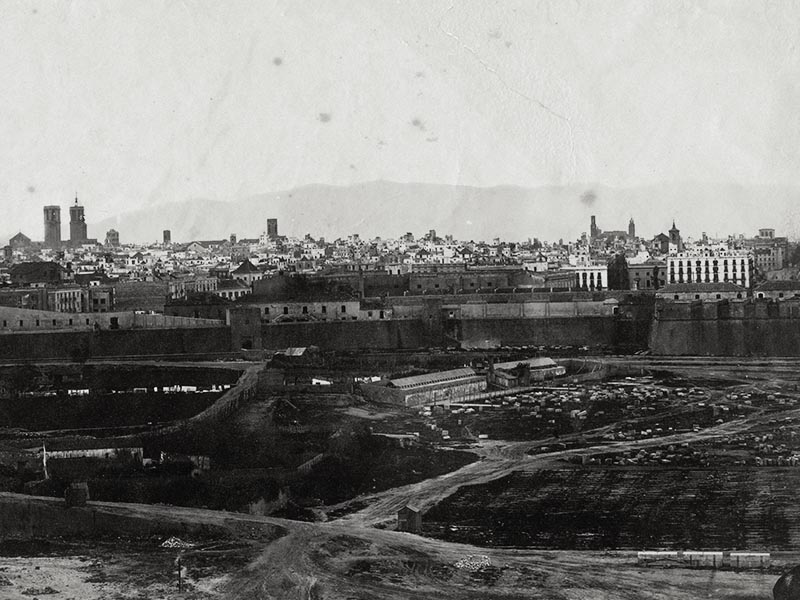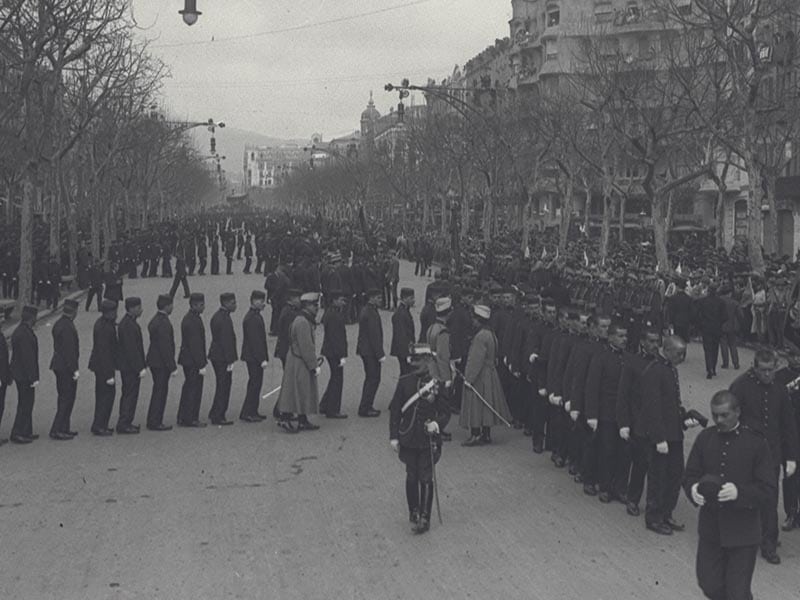Barcelona - The City Itself
Olga Schmid explains why Barcelona is such a unique European city.
One important fact is that Barcelona isn’t a state capital. I think that’s a big reason its character is unique. Barcelona is a city that’s always bustled with industry, with business. All of these activities have an impact on the city’s character Barcelona’s bourgeoisie movement from the end of the 19th century to the first half of the 20th prove it. Modernism is a reaction to that.
Enric Cobo discusses Barcelona’s history, going back to the Roman Empire.When we go back in time to the beginning, Barcelona, like other areas throughout Catalunya, was made up of small settlements, what we refer to as Iberian settlements. There was a tribe called the Laietani throughout Barcelona. Disagreement exists, but one theory suggests that a Laietani group formed a population center. a location we call Barcino. In the first century A.D., the situation in Rome stabilized and the Roman Empire had crossed Catalan land during the Punic Wars to enter into battle with the Carthaginians. So they were already familiar with the entire Mediterranean basin. So, in the first century, with the political situation settled, the Romans stabilized all of these small colonies. The Romans created the Via Augusta, a road connecting the entire Mediterranean coast, all the way to North Africa. It is approximately during the 1st century that the Romans decided that these settlements would become, not so much great cities, but established outposts. And that was the case with Barcelona. In fact, the consolidated colony is called Colonia Julia Augusta Faventia, and known by the name Barcino. So it was a colony named Julia Augusta, a name commemorating the campaigns against the Carthaginians, efforts to thwart the Carthaginians’ attempts to conquer a territory the Romans wished to hold. So, in the 1st century, the Romans see that these small settlements need to be protected. The protection came in the form of a wall surrounding what is now considered city central, the Cathedral, La Rambla… It was approximately 1,000 meters around and 1.5 to 2 meters thick. And this exists for the duration of the Roman Empire. With the collapse of the Roman Empire, the arrival of the Visigoths and other peoples, the wall becomes irrelevant. It becomes a symbol of collapse that prevents people from circulating. It also causes serious health and sanitation problems. With the wall, the city couldn’t breathe, so during the 5th and 6th century the wall starts being demolished. In fact, the wall is repurposed to erect buildings and homes. The wall, therefore, succumbs to the pressures of society. They need more space. Having a protective wall is no longer important because nobody’s bent on conquering it. They decide to gradually demolish the wall. There’s no grand plan beyond urbanizing the old Roman Barcino. This continued until the 12th or 13th century, when a much wider, much larger, more modern medieval wall was erected. The objective is different now. It’s no longer a Roman city subject to conquest. It’s a bigger city at a much greater scale, that requires protection from potential attacks and invaders within the context of the modern age, very nearly the beginning of the contemporary age from my point of view. This is a much bigger, protective wall. The Roman wall succumbed to societal pressures. The wall was no longer needed. Some parts of it are effectively repurposed, others swallowed up in the wake of Roman Barcino.
Olga Schmid discusses the increasing temperatures within Barcelona.
I’m not aware of that piece of data, but it doesn’t surprise me. The city’s density has a real impact. And the city’s terrain exacerbates it. It’s a city that opens to the sea, but Mount Tibidabo, in the back, acts like a wall. On top of that, there’s a river on each side which increases humidity and the perceived temperature. I don’t know if there’s any sort of plan to reduce traffic or industry’s impact on temperature. Industry has been leaving the city center for a long while now. There’s barely any left.
Olga Schmid discusses tourism in Barcelona, and its positive and negative impact.
That’s a great question, and a big dilemma. At what point will the city be unable to handle this increase in tourism. It’s clear that Barcelona receives a disproportionate amount of tourism. A policy was put in place a few years back. The issuance of many licenses to build hotels. That encourages the arrival of tourists. This benefits the city, and it’s good for commerce, but there are drawbacks. It also leaves the city dependent on a very specific sector, and I think the influx of so many tourists into Barcelona is starting to worry the people who live here. Largely because the average citizen sees little benefit from tourism. This is where I see a serious problem starting. There are also arguments over Airbnb. City hall isn’t giving licenses to private owners, allowing them to rent part of their homes. Because there are many types of private businesses in this group and some don’t have good intentions. But, in the end, I think the victim is the resident, who experiences a tourist invasion without any direct benefit from it.
Carme Solé Vendrell discusses the art and architecture throughout the city of Barcelona.Catalan modernism endures in some areas. In drawing, for example, there’s a whole wave of illustrators directly influenced by the first illustrators from the late 19th and early 20th century. There’s a clear connection. In architecture, I don’t think so. There are very good architects today, but that’s impossible to repeat. There is no longer the artisans or the money. And the moment is gone. I think architecture is going in a different direction. Though, for me, it’s a very important art, because everyone suffers it or enjoys it. It’s a public affair, so to speak, which is why it’s among the most important arts, actually. As far as the others… During the modernist era there were also many good painters but they were stuck in the movements of that period. And sculptors, among many others, here we have Joan Llimona who was a magnificent sculptor. For me, some of his works possess so much power. There have always been good artists. Painters like Cases, Lluïsa Vidal, Rossinyol, who made some splèndid gardens. There have alway been good painters. There’s a whole generation of painters here in Catalonia, that, unfortunately, have no museum where they can be shown. Because there’s the ‘Almanac’ and the MACBA. The MACBA is installations, modern things that don’t…well, it’s fine. And then all the old works are on Montjuïc. There’s a whole series of very good painters with no museum to put their work.
Olga Schmid explains why Barcelona neighborhoods are so distinctive.
Will you tell us why Barcelona neighborhoods are so different from one another? I suppose it’s because Barcelona is a collection of villages. Looking at a map of Barcelona one can see that Barcelona used to be the old walled city, the Ciutat Vella, exclusively. It was surrounded by small villages, and, curiously, with the construction of the citadel after the War of Spanish Succession, which was in place to control the city and its people, people were forbidden from building from a distance less than that of a cannonball’s flight. So all these little villages are from exactly that distance. And all of that, once the ban on construction is lifted, is the area that will become the Eixample. So Barcelona is a unification of these small villages, each with its own character. Gràcia, Sants, Sarrià, Sant Martí, Hostafrancs, etc. That all happened pretty recently, so I suppose that’s why they retain some of their identity. Actually, the only neighborhood that didn’t have an identity is the Eixample, since it’s so new.

1880 – View of Poble-sec and Montjuïc from the Drassanes area of Barcelona.

1870 – View of Barcelona. In the background, the wall and orchards in foreground.
